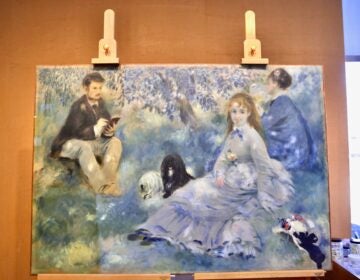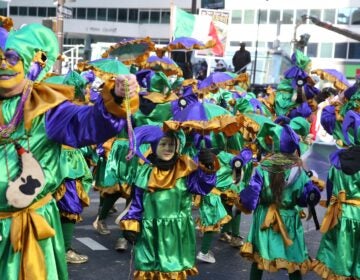A last glimpse of Barnes art before move
If you were waiting to see the Barnes art collection in Lower Merion, it’s too late now.
The galleries housing the world-famous collection of Impressionist paintings will close Sunday to prepare for the move to Center City. The remaining tickets are sold out.
The controversial plan to move the works from the suburbs to Center City Philadelphia was the motivating factor for many to make an 11th-hour visit.
“We procrastinate with this, as with everything,” said Marianne Corrigan of Reston, Va. She and her husband had been meaning to come for years and only made the effort on Wednesday, five days before the Lower Merion galleries close.
Tickets to the Lower Merion galleries were limited, timed, and by reservation only. No walk-ins. The final week of the massive collection of Impressionist treasures was booked solid.
Visitors wandering through the rooms were hushed, most galleries were crowded with hushed visitors, and most were wearing audio tour headsets.
Kyle Babcock, traveling from Ithaca, N.Y., for the day, was scribbling notes to himself as he examined the paintings.
“I wanted to see it before it was broken up and put back together,” said Babcock, a painter who says his style is deeply informed by Impressionists. “I wanted to see Barnes’ dream.”
Interpreting the Barnes dream
The Barnes galleries can be interpreted on many levels. First, the paintings themselves are treasures of early 20th century Impressionism. On another level their arrangement, done by Albert Barnes himself, accentuates associations between the works. They’re often very personal and mysterious associations.
Albert Barnes and his wife, Laura, also intended the grounds surrounding the galleries to create a holistic experience in concert with their art collection. Many people opposed to the move say it will disrupt the aesthetic ecosystem Barnes created.
For Mary Jane Durkin, a French teacher from Meadowbrook, it doesn’t matter if the Picassos and Cezannes and Renoirs are in Lower Merion or in Center City, as long as they are accessible.
“The essence of the Barnes is the paintings,” said Durkin, who just came back from a trip to France and the Louvre. “For me, that’s what I go for. Not so much the setting and where they are found.”
When the Barnes Foundation announced its intention to move with tens of millions of dollars from the Pew Foundation and the state of Pennsylvania, it launched a debate about whether the foundation should preserve the original intention of Albert Barnes’ will, or make the collection more accessible.
New members flock to foundation
Since the controversy erupted, Barnes Foundation membership has spiked from 400 two years ago to 10,000 now.
One of those new members is Sue Lowry. She has known about the collection since Barnes was still alive–he died in 1951–and showing his paintings only to personal friends.
Lowry became a member of the Barnes Foundation after the controversial move was announced. Even after she became a member, Lowry wasn’t able to visit until four days before the galleries would close.
“We’ve been trying to get reservations,” said Lowry who lives in Pottstown. “It’s not that easy to get reservations. We tried to work it into our schedule, we tried a couple of times. We finally got this for today and said, ‘We’re going.'”
Art in bloom, but not the roses
For some, getting into the Barnes on the final week was not soon enough. They procrastinated too long for the garden.
“Two weeks too late,” said Gretchen Valudes of Lancaster.
“We should have been here when the roses were blooming,” added her daughter Ellen, from Philadelphia.
“The lilacs would have been beautiful a few weeks ago,” said her mother.
The arboretum will be maintained in Lower Merion when new art galleries open downtown in the summer of 2012, but during the transition period the grounds will be closed.
WHYY is your source for fact-based, in-depth journalism and information. As a nonprofit organization, we rely on financial support from readers like you. Please give today.




